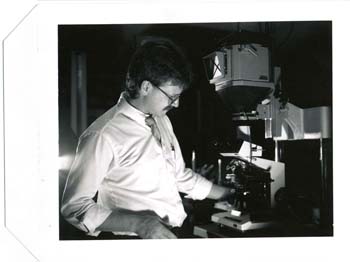|
PHMS 611 Media Foundations
This course investigates the creation, workflow and output of digital media files, using a variety of capture devices including digital cameras, smartphones, 2D/3D scanners, audio and video recording devices. Course content focuses learning about device preferences, file attributes, workflow, output, compression with consideration of data management using different media. Hands-on exercises reinforce concepts such as: file types, data compression, color management, media delivery, and distribution. Students evaluate the influences of operator choices at each stage of image formation, storage, and distribution. Special attention will be given to identifying and cultivating industry best practices. As a final project in the course, students produce an individualized course lab manual designed for future stidents. Lecture 3 (Fall).
https://elr6767.wixsite.com/ravena-mf2020
PHMS 743
This course examines how media has evolved and how it responds to changes in technology and social habits. Course content will cover various forms of media communication using both historical and contemporary perspectives. Topics include: trend recognitions, monetization in media communications, materials, processes, audience, usability, accessibility, aesthetics, content, typography, copyright issues, and innovations in publishing. Projects in the class include RESEARCH and WRITING and PUBLIC SPEAKING about contemporary media and producing a media campaign for a non-profit. At the completion of this course, students will gain have gained understanding of various media structures and communication types through the analysis of audience and content. Lecture 3 (Fall). https://www.rit.edu/artdesign/news/graduate-students-reflect-fundraising-effort-haitian-school
https://issuu.com/rit_viewfinder/docs/viewfinder_2nd_edition?fbclid=IwAR3OWg_FEHcYn0uGBdWKwSjvllUI6lS9gluuPMBIuJZKTjXYS_nouh97fAQ
PHPS 401 Photographic Sciences Capstone
Similar to a thesis, students in the Photographic Sciences capstone write and submit a proposal, that is required before they can produce an approved project that demosntrates their skills either in a group or as a stand-alone experience. Faculty will sponsor the research and development of the final project. This activity will be a demonstration of the student’s capabilities in their chosen areas of study. The project will be designed, developed and completed during the quarter. Completed projects will constitute a substantial portfolio piece.
PHPS 307 Surgical Photography
The role of photography in the digital era has transformed medical photography. With a collaboration between RIT & Rochester General Hospital students have a unique access to surgical patients and related medical procedures. Students who take this course will be exposed to the issues and methods required for contemporary surgical photography. Students will be exposed to the fundamental photographic equipment and procedures used in operating rooms including proper file management in this era of HIPAA regulations. At the end of the course, students will have visited the surgery theater at least three times with the objective of making photographs. RGH surgical photography training videos
A
short RIT Photo Blog entry about this class
PHMS 747 Capstone
This is the second of two courses designed to advance a student towards completion of their capstone. This course will guide students from their capstone proposal through the completion of a meaningful and significant capstone project. Projects can either be research oriented or developmental and must include implementation and dissemination of the project using appropriate distribution technology. (Prerequisites: PHMS-746 or equivalent course.) Lecture 3 (Spring) https://www.rit.edu/spotlights/capstone-research-projects-2022
https://www.rit.edu/news/media-arts-and-technology-graduate-students-present-learning-outcomes
PHBM 542 High Mag II
The microscope has proven itself to be an important tool for investigation since its invention in 1595. This course has been designed to go well beyond the basics required for the creation of magnified images of objects not visible without magnification. Students will explore objects using a variety of microscopical techniques including DIC, fluorescence, phase contrast, reflected light comparison microscopes and polarized light. The course will investigate both the optical and digital enhancement techniques made possible in contemporary times such time lapse, wide field high resolution and increased depth of field imaging. Video and motion stopping methods using electronic flash as well as specimen preparation will be part of the coursework.
Read a short Blog entry about this class
Visit the Class website
PHPS 202 Applications of Scientific Photography II
This is the second course in a two-semester sequence that explores new and different photographic skills and methods useful in scientific photography not covered in Scientific Photography I. Appropriate subjects will be explored in each of the various assignments designed to develop methods used in various scientific applications. Students will investigate new ways to reveal a subject’s characteristics such as imaging with ultraviolet and infrared revealing what cannot be observed without photographic imaging and image processing. The course will expose students to the processes required to produce scientific research as well as scientific posters. Visit the class website
PHPS 402 Photographic Sciences Capstone
Similar to a thesis, students in the Photographic Sciences capstone write and submit a proposal, that is required before they can produce an approved project that demosntrates their skills either in a group or as a stand-alone experience. Faculty will sponsor the research and development of the final project. This activity will be a demonstration of the student’s capabilities in their chosen areas of study. The project will be designed, developed and completed during the quarter. Completed projects will constitute a substantial portfolio piece. Visit a Tumblr site sharing the students final projects from spring 2015

Photo by Pat Epstein 1991
Fall
Quarter
JPHB 100 Survey of Biomed 1988-2009
JPHB 201 Applications of Science Photo I - Laboratory Photo 1986 - 2012
JPHB 357 Photomacrography 1988 - 2008
Winter
Quarter
Applications of Science Photo II - Photomicrography Spring 2016
JPHB 202 Applications of Science Photo II 1986 - 2011
JPHB 364 Photography through the Microscope 1988 - present
Spring
Quarter
JPHB 401 Advanced
Applications of Biomed Photo 1987- 2011
Applications of Scientific Photography ll - electronic flash in science and medicine 1987 - 2010
the Rochester Panoramic 2001 - 2007
BPC Bulletin 1987 - 2010 |
![]()